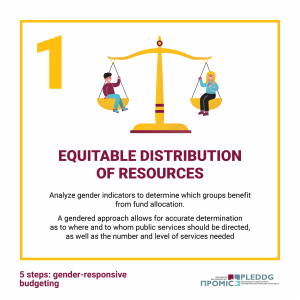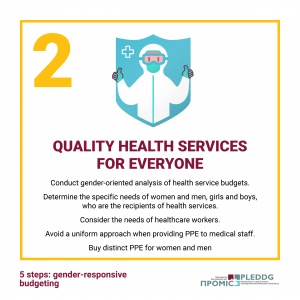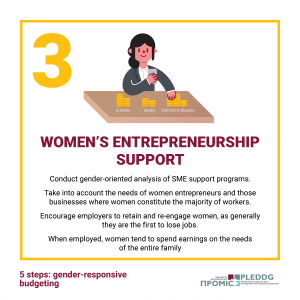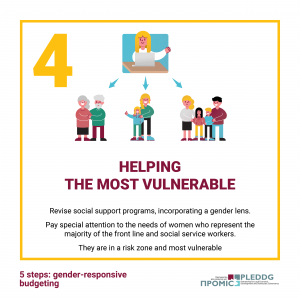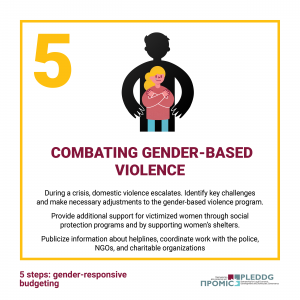Current realities require local governments to review budget programs in order to ensure targeted and equitable fund allocation. Using a gender-responsive approach is an effective tool for crisis response.
PLEDDG presents 5 steps that will help municipalities to adapt budget expenditures to the current needs of their communities:
- Equitable distribution of resources
Analyze gender indicators to determine which groups benefit from fund allocation. A gendered approach allows for accurate determination as to where and to whom public services should be directed, as well as the number and level of services needed.
- Quality health services for everyone
Conduct gender-oriented analysis of health service budgets. Determine the specific needs of women and men, girls and boys, who are the recipients of health services. Consider the needs of healthcare workers. Avoid a uniform approach when providing PPE to medical staff. Buy distinct PPE for women and men.
- Women’s entrepreneurship support
Conduct gender-oriented analysis of SME support programs. Take into account the needs of women entrepreneurs and those businesses where women constitute the majority of workers. Encourage employers to retain and re-engage women, as generally they are the first to lose jobs. When employed, women tend to spend earnings on the needs of the entire family.
- Helping the most vulnerable
Revise social support programs, incorporating a gender lens. Pay special attention to the needs of women who represent the majority of the front line and social service workers. They are in a risk zone and most vulnerable.
- Combating gender-based violence
During a crisis, domestic violence escalates. Identify key challenges and make necessary adjustments to the gender-based violence program. Provide additional support for victimized women through social protection programs and by supporting women’s shelters. Publicize information about helplines, coordinate work with the police, NGOs, and charitable organizations.


